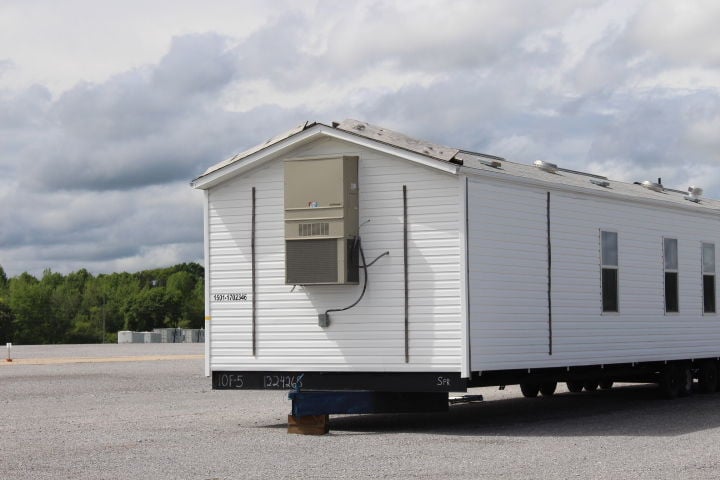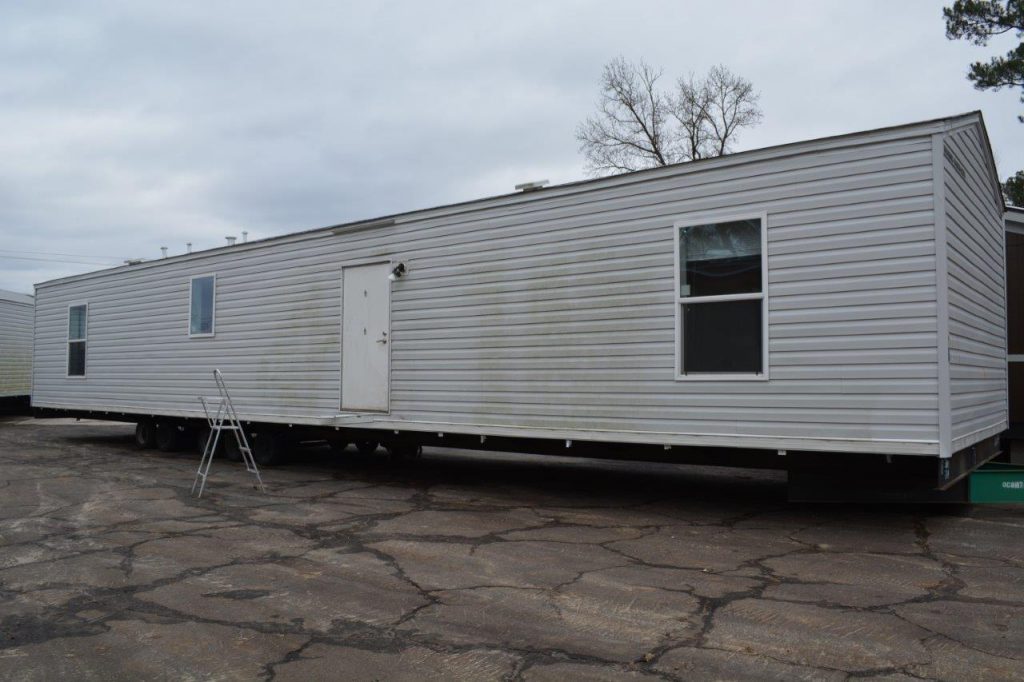FEMA Trailer Basics

FEMA trailers, also known as mobile homes or temporary housing units, are a vital part of disaster relief efforts, providing temporary shelter to those who have lost their homes due to natural disasters or other emergencies. They offer a safe and secure environment for families to rebuild their lives after experiencing devastating events.
Features and Specifications of a 2-Bedroom FEMA Trailer
The standard 2-bedroom FEMA trailer is designed to accommodate a family of four. These units are typically around 28 feet long and 12 feet wide, offering a living space of approximately 336 square feet.
Here are some typical features:
- Two bedrooms, each with a double bed
- A living room with a sofa bed
- A kitchen with a refrigerator, stove, and microwave
- A bathroom with a toilet, shower, and sink
- Heating and air conditioning
- A porch or deck for outdoor space
The trailers are built to withstand harsh weather conditions and are equipped with safety features like smoke detectors and carbon monoxide detectors.
Advantages and Disadvantages of Living in a FEMA Trailer
FEMA trailers provide a safe and secure shelter for families displaced by disasters, offering a temporary solution while they rebuild their lives. However, there are also some drawbacks to living in a FEMA trailer.
Here is a breakdown of the advantages and disadvantages:
Advantages
- Temporary shelter: FEMA trailers provide a safe and secure temporary home for families displaced by disasters.
- Basic amenities: They are equipped with essential amenities like a kitchen, bathroom, and sleeping areas.
- Cost-effective: FEMA trailers are provided free of charge to disaster victims.
- Quick deployment: FEMA can quickly deploy trailers to disaster areas, providing immediate shelter.
Disadvantages
- Limited space: FEMA trailers are relatively small and may feel cramped for larger families.
- Temporary solution: They are intended for short-term use and may not be suitable for long-term living.
- Maintenance: Residents are responsible for maintaining the trailers, which can be challenging in disaster-affected areas.
- Potential health risks: FEMA trailers have been linked to health problems due to potential mold growth and other environmental factors.
Use of FEMA Trailers in Disaster Scenarios
FEMA trailers are deployed in a wide range of disaster scenarios, including:
- Hurricane: Following a hurricane, FEMA trailers provide temporary housing for those who have lost their homes due to flooding, wind damage, or other hurricane-related destruction.
- Earthquake: In the aftermath of an earthquake, FEMA trailers offer shelter to families whose homes have been damaged or destroyed.
- Wildfire: During wildfire season, FEMA trailers can be used to house individuals displaced by wildfire damage.
- Flood: In areas affected by flooding, FEMA trailers provide a temporary home for those who have lost their homes due to rising water levels.
Purchasing and Owning a FEMA Trailer: 2 Bedroom Fema Trailer

So, you’re thinking about purchasing a FEMA trailer. It’s a big decision, and there’s a lot to consider. FEMA trailers are a great option for those who need temporary housing, but there are some things you should know before you buy one.
Where to Purchase a FEMA Trailer, 2 bedroom fema trailer
You can purchase a FEMA trailer from a variety of sources, including government agencies, private sellers, and online marketplaces.
* Government Agencies: The Federal Emergency Management Agency (FEMA) itself sometimes sells surplus trailers. You can find information about these sales on the FEMA website.
* Private Sellers: Many private individuals and businesses sell FEMA trailers. You can find these trailers listed on websites like Craigslist, eBay, and Facebook Marketplace.
* Online Marketplaces: Several online marketplaces specialize in selling FEMA trailers, such as FEMA Trailer Sales and FEMA Trailer Depot.
Cost of Purchasing and Maintaining a FEMA Trailer
The cost of a FEMA trailer varies depending on the age, condition, and features of the trailer. You can expect to pay anywhere from a few thousand dollars for a used trailer to tens of thousands of dollars for a new one.
* Purchasing Cost: A new FEMA trailer can cost anywhere from $10,000 to $50,000 or more, depending on the size and features. Used trailers can be purchased for significantly less, with prices ranging from $5,000 to $20,000.
* Maintenance Cost: FEMA trailers require regular maintenance, just like any other home. You’ll need to budget for things like repairs, inspections, and insurance.
Legal Requirements and Regulations
There are a number of legal requirements and regulations that you need to be aware of when owning a FEMA trailer.
* State and Local Regulations: Many states and local governments have specific regulations regarding the use and placement of FEMA trailers. You’ll need to check with your local authorities to find out what the rules are in your area.
* Building Codes: FEMA trailers must meet certain building codes and safety standards. You’ll need to make sure that your trailer meets these requirements before you can live in it.
* Insurance: You’ll need to get insurance for your FEMA trailer, just like you would for any other home.
Types of FEMA Trailers
FEMA trailers come in a variety of sizes and configurations. Here is a table outlining some of the most common types of FEMA trailers:
| Type | Size | Features | Cost |
|---|---|---|---|
| Single-Wide | 16′ x 80′ | One bedroom, one bathroom, kitchen, living room | $10,000 – $25,000 |
| Double-Wide | 32′ x 80′ | Two bedrooms, two bathrooms, kitchen, living room | $20,000 – $50,000 |
| Park Model | 24′ x 48′ | Two bedrooms, one bathroom, kitchen, living room | $15,000 – $35,000 |
| Mobile Home | Variable | Multiple bedrooms, bathrooms, kitchen, living room | $10,000 – $100,000+ |
Living in a FEMA Trailer

Living in a FEMA trailer can be a temporary solution to a housing crisis, but it comes with its own set of challenges and considerations. While they may not be the most glamorous living spaces, with some planning and creativity, you can make your FEMA trailer a comfortable and functional home.
Setting Up and Decorating a FEMA Trailer for a Family
Creating a comfortable and welcoming living space in a FEMA trailer is essential, especially for families. The limited space requires smart planning and organization.
- Maximize Space: Utilize multi-functional furniture like a sofa bed or a table that doubles as a desk. Consider using vertical storage solutions like shelves and wall organizers to keep belongings off the floor and free up valuable space.
- Create Zones: Divide the trailer into distinct zones for different activities. Use rugs, curtains, or furniture arrangements to create visual separation between living, dining, and sleeping areas.
- Personalize the Space: Add personal touches like curtains, artwork, and family photos to make the FEMA trailer feel more like home. You can use removable wallpaper or paint to create a more inviting atmosphere.
Managing Utilities and Resources
FEMA trailers often come equipped with basic utilities, but managing them efficiently is crucial.
- Water Conservation: Be mindful of water usage. Take shorter showers, fix any leaks promptly, and use low-flow showerheads and faucets.
- Energy Efficiency: Use energy-efficient appliances and light bulbs. Unplug electronic devices when not in use to conserve energy.
- Waste Management: Properly dispose of trash and recycling. Consider composting food scraps to reduce waste.
Creating a Safe and Secure Living Environment
Safety and security are paramount in a FEMA trailer.
- Fire Safety: Install smoke detectors and carbon monoxide detectors. Keep a fire extinguisher readily available.
- Security Measures: Install a door chain or a peephole for added security. Consider using window locks and a security system.
- First Aid Kit: Keep a well-stocked first aid kit readily available in case of minor injuries.
A 2 bedroom FEMA trailer might be a temporary solution, but if you’re looking for a more permanent home in a vibrant area, you might want to consider checking out 2 bedroom apartments in Boca Raton. Boca Raton offers a range of options for families, with plenty of amenities and a beautiful beachfront location.
While a FEMA trailer might serve its purpose for a short period, a comfortable apartment in Boca Raton can provide a long-term living solution.
A 2-bedroom FEMA trailer might be temporary housing, but if you’re looking for a more comfortable and permanent living space, consider a Shawnee Village Resort 2-bedroom villa. While a FEMA trailer offers basic shelter, a villa provides amenities like a kitchen, bathroom, and living area, offering a more enjoyable living experience.
So, if you’re in need of a new home, explore your options beyond just FEMA trailers.
